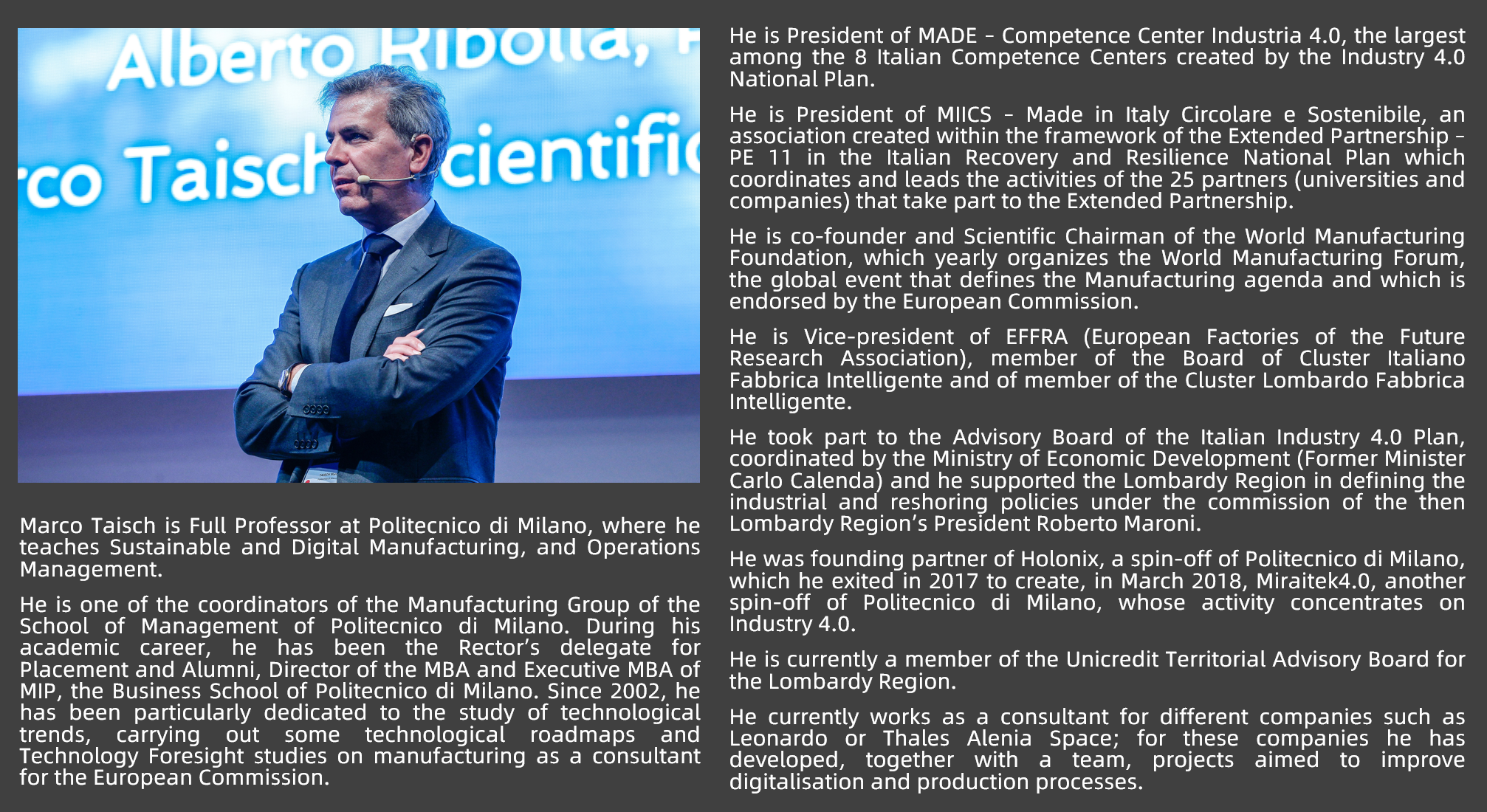How do we efficiently manage the needs of very large-scale production with the need to personalise the products?
The reconciliation of these two factors actually began in 1908 with the Ford T, and the effort to bring more and more customisation to products, while maintaining high production volumes. Then after the second World War mass customisation exploded. On the one hand, people’s income increased, and the consumer was no longer content to have just any car of any type, any shape, as long as it was black! While on the other hand, that famous marketing slogan in fact disguised the production requirement to keep costs to a minimum, with a higher sale price based on customisation balanced with extreme production standardisation.Consumers today aren’t only sensitive towards price, but also to a hyper personalisation.
Today, there are various factors to take into consideration. First, consumers today aren’t only sensitive towards price, but also to a hyper personalisation. What do I mean by that? It means that a product has to meet the needs of an individual, rather than a group or segment of consumers. So how do we manage the needs of cost-efficient standardised production and such specific consumer needs?
Well, unlike in the past, we have moved on from the matter of volumes. Whether a factory produces 100 pieces or 1000 pieces, thanks to the advances in production systems, there is a high level of flexibility. Basically, manufacturing technology and digital technology are now the same, allowing us extremely high levels of customisation and personalisation. So in fact the need to reconcile these two factors is hardly a problem anymore. The problem existed when there was inflexibility in the production system, when passing from one model or variation to another meant you had to intervene with tools or with factory configurations that were inevitably physical or mechanical. For example, you’d have to change the machine press, or manually change the machine settings. Today, all these configurations are managed via software, and so take zero time.
Another factor is the ability of the very talented designers who can generate personalisation with perhaps a little sleight of hand magic for the consumer. What I’m talking about is the concept of perceived personalisation. The hidden part of the product is highly standardised, but if I go on the website of a white goods manufacturer, I see 45 different models of refrigerator. I’m in the process of doing up my house, so am currently immersed in this. I know that there are maybe a limited number of basic configurations, but last-minute software interventions provide a host of apparently different models.
And how much has this standardisation of products, been influenced by the automotive industry, who use the concept of the standardised ‘platform’?
Very much so. The automotive industry calls it a ‘platform’, in other industries they use other terms. In kitchen design for example, it’s called module standardisation. If you look at the catalogues of the big-name kitchen specialists you’ll see reference to 60 cm, 45 cm, 30 cm modules. And very interestingly, there’s a huge work of standardisation in kitchen provision that in many cases has emerged in an unplanned way. While in the car market each individual manufacturer has said, “I’ll create my own platform that will help me to make the most vehicles in my range”, in the kitchen market, standardisation has emerged from the bottom up. With kitchen furniture modules of 60cm, 45cm, 30cm, you have to install an appliance of those dimensions, and it’s not as if the white goods manufacturers and the kitchen manufacturers got together and agreed on this, it emerged by itself. So ultimately the concept is to modularise the product as much as possible and play around with all the different possibilities.How does the need for hyper personalisation impact manufacturers who operate on a very large scale?
Chinese producers, like all manufacturers around the globe, are facing a huge change in consumer expectations which in many cases have become more extreme post-Covid. Young people are driving this, but all demographics are affected.The first factor as mentioned above is hyper personalisation. This already existed for 10 or 20 years before Covid, but has become more accentuated every year. If you think about young people today and the market for trainers, they absolutely take for granted that they can go on to their favourite brand’s website and customise a pair of shoes. This is not now seen as value added but as a market necessity that goes without saying. You offer a range of products that are extremely customisable or you’re out of business.
The second requirement which is much more noticeable now, is very reduced delivery times. When we were in lockdown, the only way to have products at home was via e-commerce. Many people who before lockdown had not used e-commerce now had no choice, and discovered that they could receive practically anything in 24 hours. Once Covid was over, this experience changed their purchase processes.
Although they could return now physically to the shops, they continued to buy online. What does this experience say to me as a consumer? It says: “Everything, immediately!” So today, you provide fast delivery times, or you have problems. What China is doing to tackle these requirements is building ways to get closer to the markets they serve, through partnerships and investments.
Are there any other factors that are affecting the efficient and fast delivery of goods on a global scale?
Absolutely. Think about how globalised logistics worked until recently. It was the nervous system of the world, and it worked perfectly. Then came Covid, lockdowns, blocked ports, ships obstructing the Suez Canal, and we discovered that logistics isn’t as reliable as we thought.So large manufacturers need to be thinking about how to ensure that global logistics work, avoiding bottlenecks.
There needs to be a rapid increase in the production and provision of containers, and longer-term investment in the expansion of ports’ capacity.
In fact, in the specific case of Homa, I believe they started 20 years ago to invest in and partner with the Chinese ports to guarantee the free flow of their traffic towards the rest of the world.
“Future decisio“ns for companies and manufacturers will have to tap into the behaviour of young people: every choice is based on information gathering before decision-making.”
What are the emerging technologies today that can help improve quality and efficiency in production?
The same ones we’ve been seeing for around the last 10 years, under the umbrella of Industry 4.0. big data, cloud computing, 5G. 5G private networks, for example, are very important. Enabling the flow of large amounts of data via 5G means we can control machines remotely which we’re unable to do with 4G, because currently to control a robot with 4G you need a cable.Blockchain is used a lot in the world of finance, whereas in factories currently I don’t see it a great deal.
As long as the consumer continues to trust the brand as a guarantee of quality, the watertight assurance of blockchain isn’t yet needed in this world.
What are the main challenges for domestic refrigerators in the next 10 years and how can we overcome them?
If we’re looking at the next 10 years we have to consider the outlook and expectations of today’s children and teenagers who will grow up over that decade. We’ve already looked at reduced delivery times. Today young people make no distinction between buying a T-shirt or a fridge or a car. They want it tomorrow morning. When I told my 4 years old daughter the disappointing news that our new car would be delivered in 4 months’ time, so we would have to go on holiday in the old one, she said “Daddy, go on Amazon and they’ll send it to you tomorrow morning!” This is the consumer of tomorrow. Buying habits are changing. People don’t plan any more. In the past, we went shopping at the supermarket on Saturday afternoon with a list for everything we needed for the week. We don’t do that now. We know we can go online to our favourite website or our local supermarket who can deliver the stuff in 2 hours. Mid-afternoon we can ask ourselves what we want to eat tonight because we know we can order it and it will be delivered to the office before we go home at 6.00pm. So we hardly plan, because we know everything is available.A second important point is that youngsters are not just ‘digital natives’ but ‘sustainable natives’. You can sell me an A class refrigerator with low energy usage, but this is no longer enough. You must guarantee that it comes from an A class factory, that it has a low impact on the environment. And young people today have an awareness of the life cycle of the product. You can’t content them by saying this has low consumption because immediately their next question is about recycling and green production. They want guarantees on this.
Is the environmental impact of the production phase significantly lower than that of energy consumption and disposal?
Absolutely. In the automotive industry, it’s around 30% on the production side and 70% in usage. In white goods, it’s around 5-10% in production and 90-95% during usage and disposal.What about greenwashing, do young people trust companies, brands?
No, they don’t trust them. They have an innate awareness deriving from their digital knowledge. There is of course a dilemma and a challenge here. They do tend to trust information that they find online. But there is a crucial question: is what they find online true, reliable? In this case, possibly blockchain could become the answer, providing a way to reliably navigate this mass of more or less verifiable online information. Future decisions for companies and manufacturers will have to tap into the behaviour of these young people. If you study their behaviour, choices and decisions, everything is based on information gathering before decision- making. They ask themselves, “What shall I do today?”, and then they visit their favourite sites and make a decision based on what they see there.So in our case, the subject of monitoring data, information, the factory, energy consumption, is fundamental. Of course they don’t go to China and do an audit of the factory, that’s where businesses will be created that monitor and certify the energy use of the refrigerator or the energy consumption in the factory.
Copyright © Homa 2023
All rights reserved

.jpg?VGhlIFBlcmZlY3QgU2xvdC1pbijmraPnoa4pLmpwZw==)












.jpg?MTkyMHg3MjDvvIhkZXPvvIkuanBn)
.jpg?MTAyNHg3NDDvvIhkZXPvvIkuanBn)




















